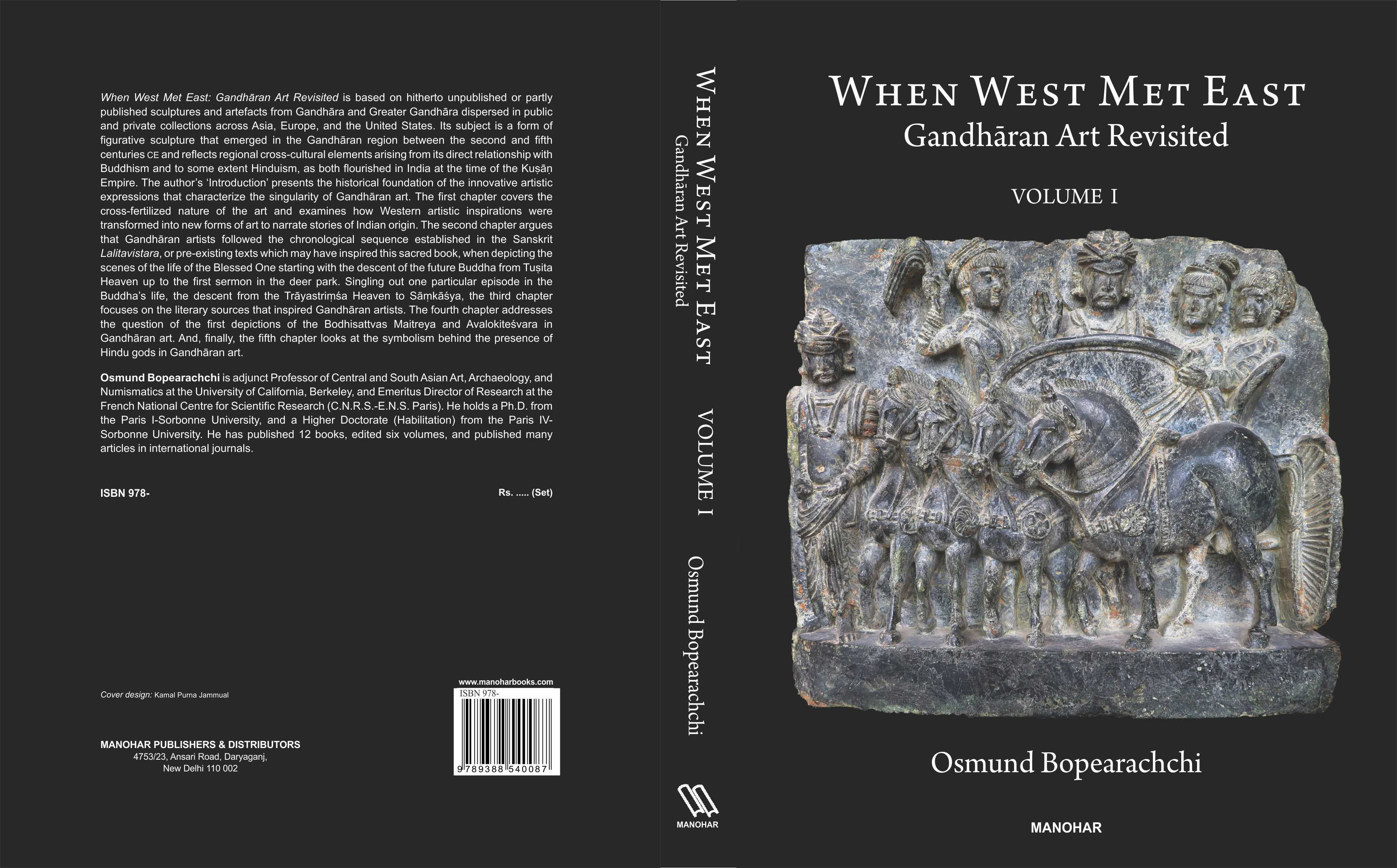When West Met East. Gandharan Art Revisted
When West Met East: Gandhāran Art Revisted is based on hitherto unpublished or partly published sculptures and artefacts from Gandhāra and Greater Gandhāra dispersed in public and private collections across Asia, Europe and Untied States. Its subject is a form of figurative sculpture that emerged in Gandhāran regions between the second and fifth centuries CE and reflects reginal cross-cultural elements arising from its direct relationship with Buddhism and to a certain extent with Hinduism as both flourished in India at the time of the Kuṣāṇ Empire. The author’s introduction presents the historical foundation of the innovative artistic expressions that characterize the singularity of Gandhāran art. The first chapter covers the cross-fertilized nature of the art and examines how Wesern artistic inspirations were transformed into new forms of art to narrate stories of Indian origin. The second chapter argues that Gandhāran artists followed the chronological sequence established by the Sanskrit Lalitavistara or pre-existing texts which may have inspired this sacred book this sacred book when depicting the scenes of the life of the Blessed One starting with the descent from the future Buddha from Tuṣita Heaven up to the first sermon. Singling out one particular episode in the Buddha’s life the descent from the Trāyastriṃśa Heaven to Sāṃkāśya, the third chapter thus focuses on the literary sources that inspired Gandhāran artists. The fourth chapter addresses the question of the first depictions of Maitreya and Avalokiteśvara in Gandhāran art. And finally, the fifth chapter looks at the symbolism behind the presence of Hindu gods in Gandhāran art. This book received the ‘Hirayama Book Price’ attributed by the French Academy of Inscriptions and Belles-Lettres, on June 2020.

Publisher
Manohar
ISBN
978-93-88540-00-0
Published
2020
Specialisation
Humanities
Theme
Art and Culture
Region
Central Asia